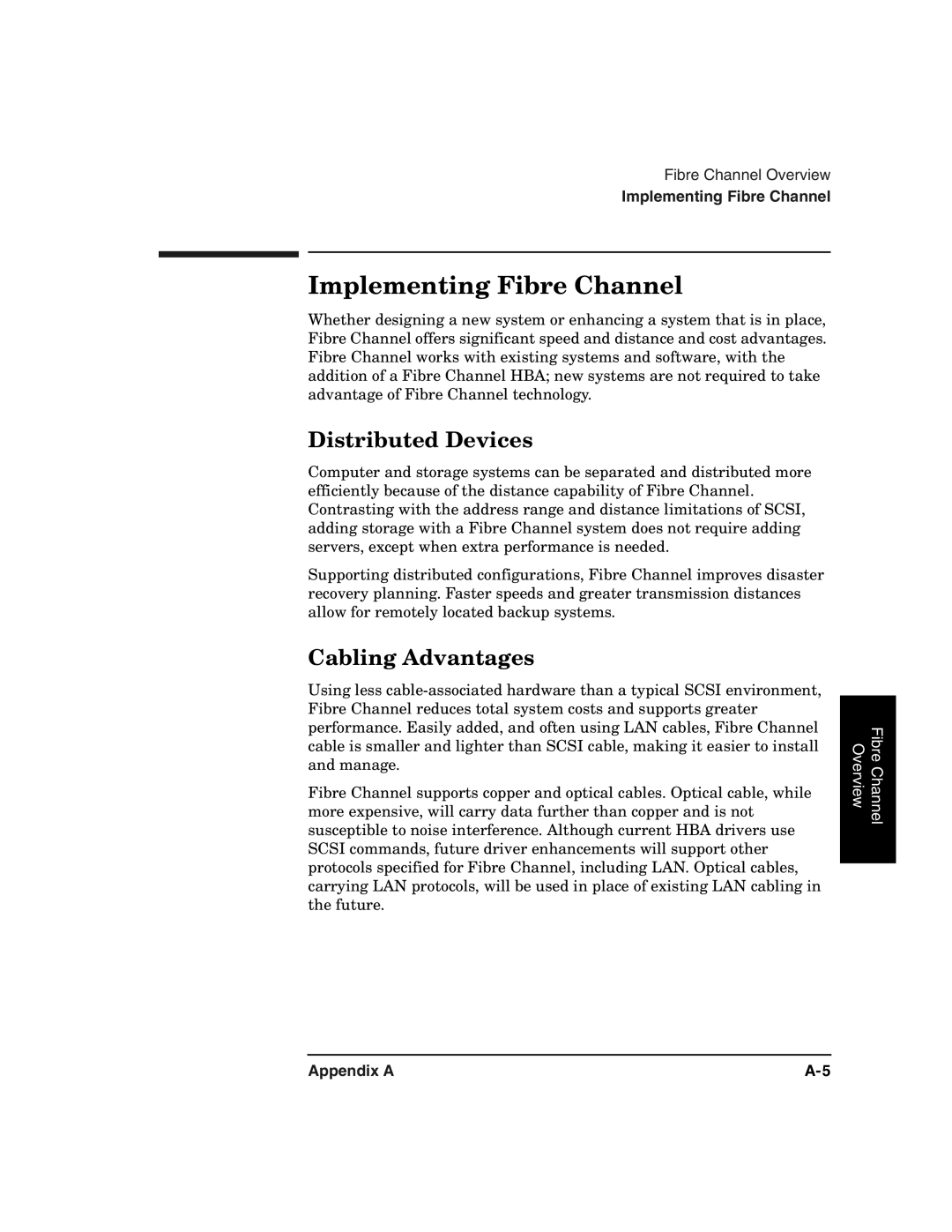
Fibre Channel Overview
Implementing Fibre Channel
Implementing Fibre Channel
Whether designing a new system or enhancing a system that is in place, Fibre Channel offers significant speed and distance and cost advantages. Fibre Channel works with existing systems and software, with the addition of a Fibre Channel HBA; new systems are not required to take advantage of Fibre Channel technology.
Distributed Devices
Computer and storage systems can be separated and distributed more efficiently because of the distance capability of Fibre Channel. Contrasting with the address range and distance limitations of SCSI, adding storage with a Fibre Channel system does not require adding servers, except when extra performance is needed.
Supporting distributed configurations, Fibre Channel improves disaster recovery planning. Faster speeds and greater transmission distances allow for remotely located backup systems.
Cabling Advantages
Using less
Fibre Channel supports copper and optical cables. Optical cable, while more expensive, will carry data further than copper and is not susceptible to noise interference. Although current HBA drivers use SCSI commands, future driver enhancements will support other protocols specified for Fibre Channel, including LAN. Optical cables, carrying LAN protocols, will be used in place of existing LAN cabling in the future.
Overview | Fibre Channel |
|
|
Appendix A |
